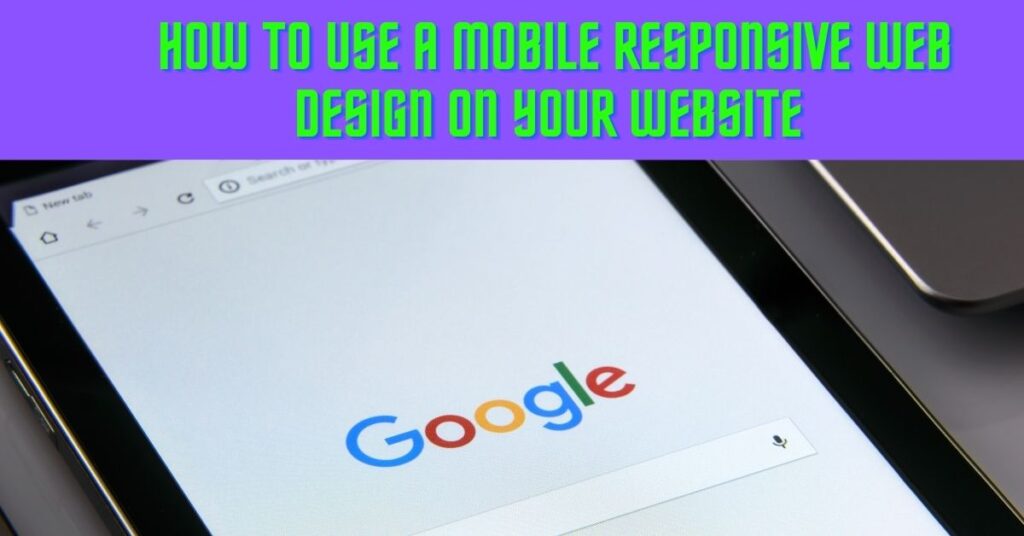61 percent of users on mobile favor responsive web designs. It offers an effortless experience between mobile and desktop and improves the visibility of the search engine, as well as being simple to set up. The fluid grid gives users the most optimal experience regardless of the screen. These are the benefits of responsive mobile web design. Find out more here. Find out how you can implement responsive mobile design on your site. We’ll discuss these advantages and the best way to make them work.
60 percent of users on mobile prefer responsive websites designs
A recent study revealed that the majority of users on mobile prefer responsive website designs. This means that a website that’s not mobile-friendly will probably not be revisited by mobile users. Furthermore the study found that 61 percent of mobile users quit a site because of the site’s performance. According to research that 50 percent of users on the internet access social media through mobile devices. Based on these results, it’s evident that designing a responsive website is essential to ensure your site is easily accessible to a wider range of users.
It’s time to make the switch into responsive website design. Mobile users spend a significant amount of their time surfing websites. If they are unable to find the information they require or the site doesn’t load well, they’ll most likely go elsewhere. Fortunately responsive web design can aid in making the experience simpler and more enjoyable for users. This is why it’s an essential component of an effective web strategy.
The primary advantages of responsive web designs for smartphone users are enhanced user experience as well as higher rankings in search results. If a website isn’t compatible with their device users will go away and be likely to not return. A responsive design can prevent users from being annoyed and will boost their duration on website. Although it might seem like an insignificant difference, it can make a significant difference. It’s no surprise that the majority of mobile users prefer responsive websites.
Another advantage that comes with responsive design is its ability to adapt to different screen sizes. Utilizing responsive web design for your website makes it easier to alter your website at any time. Also, it increases the likelihood of achieving higher rankings in search engines. Since responsive designs are flexible and can be easily modified many companies don’t have the time to update their websites. This feature makes it easy for you to make the modifications you require without losing your customers.
Another benefit of responsive website layout is the fact that Google favors responsive web design. Since it utilizes the identical HTML across various devices Google’s bot is more likely to crawl your site in the same way. If your site is not responsive, Google will have to crawl your website multiple times in order to discover all its information. It’s definitely worthwhile. The benefits of responsive design on mobile websites are substantial. A recent study revealed that 61 % of users on mobile prefer responsive design over different versions of the same website.
It provides an effortless experience from mobile to desktop
The secret to success in the field of digital marketing is to create an experience that is seamless for customers who can easily switch from one device to another without ignoring any step. One of the most effective examples is Reddit which allows its users to download its mobile app on smartphones without needing to download it. When they do this, they’re also conserving the details of what they’ve clicked prior to installing the application.
Nowadays, consumers consume 24/7 on their devices and make purchases via a variety of channels. The rapid rise of mobile devices, as well as the increase in high-speed Internet and WiFi hotspots that are free has created the creation of an “always-on” world that is awash with information and motivated to purchase educated purchase decisions. According to Miller the report on the evolution of the consumer experience shows that customers are using mobile devices to research and for information.
Alongside providing an effortless user experience, responsive design assist in improving your site’s rank on search engines. In contrast to traditional websites, responsive designs display the content in a grid and can adapt to various sizes of screens. They’re also more likely be found by Google which could help improve search engine rankings. Since they’re developed in a consistent fashion the synchronization of user experience between desktop and mobile is vital to provide an seamless user experience.
Enhancing user experience across many points of contact is essential to increase user retention as well as ensuring that conversions are made. Although it is possible to create the best user experience across every device, it’s essential to take into account user behaviour across all channels. The research of users can help determine the patterns of behavior of your customers and offer the appropriate tools to ensure an effortless experience across different various touchpoints. If your users are at ease and confident in a particular medium and have a positive experience, they’re more likely make the switch. If you don’t employ an approach that is based on user experience then you’ll see that your efforts aren’t as effective as you’d like.
It enhances the visibility of search engines.
If your site isn’t mobile friendly, you’re losing out on a significant amount of visitors. While you have to make your website mobile-friendly in order to attract more users, but you also should ensure that your site’s content is easy to navigate. A responsive design for your website plays an important part for SEO and is crucial in attracting more organic traffic. Google is searching for content that will help users locate what they are seeking quickly. Additionally it makes your website more likely show up in local results in Google searches.
A responsive mobile-friendly website design can increase your ranking in Google’s search results. Google prefers websites that have the capability of responding to various screen resolutions. It’s much simpler to link, share to, and interact with the content on one site than on multiple screens. In addition, Google puts more emphasis on the user experience as an element of ranking. Mobile responsive design will increase the visibility of your site on Google since it’s very likely that your site will rank more prominently than a website with no mobile-responsive design.
A responsive website can optimize your website’s content for a range size screens. It’s designed to adapt to the screen size that is available on every device. It allows readers to read text on any device , without needing scroll horizontally. A mobile-responsive web design can allow your website to be accessible across various screen sizes, which includes those for wearable devices. If your site isn’t mobile-friendly, it could be overshadowed by your competitors.
Another benefit of responsive designs is that it’s easier to manage a single site. It also means you can apply an unifying SEO strategy. This is vital for increasing the visibility of your website for your website on search engines. Responsive websites enable users to share content on social media. Your website will be more likely to be noticed and get more visitors. This is the ideal solution for your site!
It’s simple to put into place
If you’re trying to figure out how you can make your website flexible to different sizes of screens The answer is easy. A responsive design makes more easy to present information and layout elements in a way that can be rearranged and automatically resize images as well as forms to fit various screen sizes. To achieve this you can make use of alternative style sheets, include white space in your design. You can also replace the source of navigation for images with icons. In this way the content can adapt to different screen sizes without sacrificing any features or quality.
The first step for the implementation of a mobile-friendly website design is to understand your customers. This is knowing how your visitors visit your website and the devices they are using to access the internet. Today the majority of US website traffic is from mobile devices. In 2020 the world will have 2.6 billion users of smartphones. That means mobile design is vital, more than ever. With a mobile responsive website design, you can ensure that your site will be able to be seen on the top screens.
In addition to accommodating different sizes of screens, a responsive website should make use of flexible images. Images can be scaled using an amount of the size of the window. Similar principles apply to navigation. Navigation should be simple to use, regardless of whether it’s a hamburger-style menu or dropdown menu, expand/collapse fields and tabs which scroll horizontally as in YouTube. Make sure the site is accessible on every device.
To ensure that the mobile-friendly design functions make sure you consider that different devices employ different methods of interactions. It isn’t possible for that a user on a mobile device to press the desktop’s topmost button and so the primary navigation should be on the lower part of your screen. Be sure that the most important links are at least 44px. Thumbs simply cannot get to the highest point of a mobile’s screen.
It is possible to create responsive websites using CSS. CSS is an open language that provides users with numerous options to make your website responsive. Modern browsers are able to support CSS layouts that flex, and these two styles of design are the most effective way to make your site mobile-friendly. Alongside CSS Flexbox layout, CSS flexbox lets you make use of “box-sizing” as well as “flex” within your site’s code.






